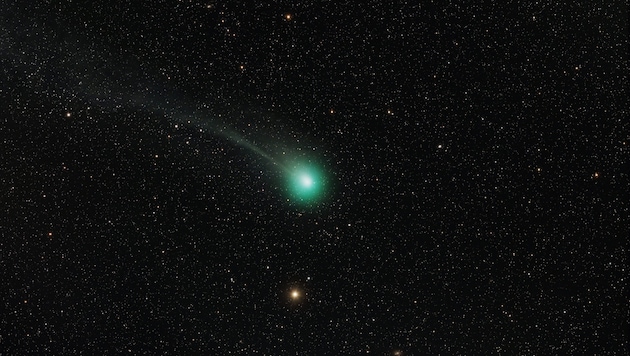Will not return until 2095
Bright comet freely visible at Easter with luck
On Monday, the bright light of the full moon is still distracting, but in the next few days, with a little luck, a tail star could be visible to the naked eye in the evening sky. After 71 years, comet 12 P/Pons-Brooks is currently approaching the sun again.
From the Easter weekend, as soon as the moon no longer interferes, it could be "just visible in dark skies", explained comet expert and chairman of the Martinsberg Astronomical Center (Lower Austria), Michael Jäger. "I haven't seen it with the naked eye yet, but the weather has been very modest here," said Jäger, who discovered comet 290P/Jäger in 1998.
Comet can shine brightly
12 P/Pons-Brooks is prone to bursts of brightness. Major jumps in brightness overnight were observed when the comet returned in the 19th and 20th centuries, explained Jäger. It was remarkable that this brightening occurred long before the comet had reached its closest point to the sun (perihelion), "the closer it came to the sun, the smaller the bursts of brightness were".
The comet reaches its closest point to the sun on April 21. Due to its highly inclined orbit, it will only be visible in Central Europe before perihelion, reports Alexander Pikhard from the Vienna Astronomy Association (WAA).
The shell around the core shimmers green
Jäger recommends those interested to look out for the comet in the "short window of around 90 minutes after sunset". The tail star is low on the horizon towards the west-northwest, "but still high enough and it is already dark enough there". It doesn't hurt to at least have binoculars with you to get a better view of the comet with its green glowing coma, the diffuse glowing shell around the nucleus. It is also slowly beginning to develop a dust tail, "which is good because we can see it better with the human eye at night than the blue ion tail that has dominated so far," says Jäger.
Discovered in July 1812
Comet 12 P/Pons-Brooks orbits the sun on an elongated elliptical orbit once every 71.3 years. The celestial body was discovered in July 1812 by Jean-Louis Pons at the Marseille Observatory and rediscovered by William R. Brooks in 1883 after an orbital disturbance. With its orbital period around the sun, its orbit is similar to that of the well-known comet 1P/Halley, according to WAA boss Pikhard.
Comet is the size of Vienna
Together with Halley's comet, 12 P/Pons-Brooks is one of the largest periodic comets, according to Jäger. While the nucleus of 1P/Halley measures around 15 kilometers, that of 12 P/Pons-Brooks is around twice as large at 30 kilometers - and is roughly the diameter of the Austrian capital Vienna.











Da dieser Artikel älter als 18 Monate ist, ist zum jetzigen Zeitpunkt kein Kommentieren mehr möglich.
Wir laden Sie ein, bei einer aktuelleren themenrelevanten Story mitzudiskutieren: Themenübersicht.
Bei Fragen können Sie sich gern an das Community-Team per Mail an forum@krone.at wenden.